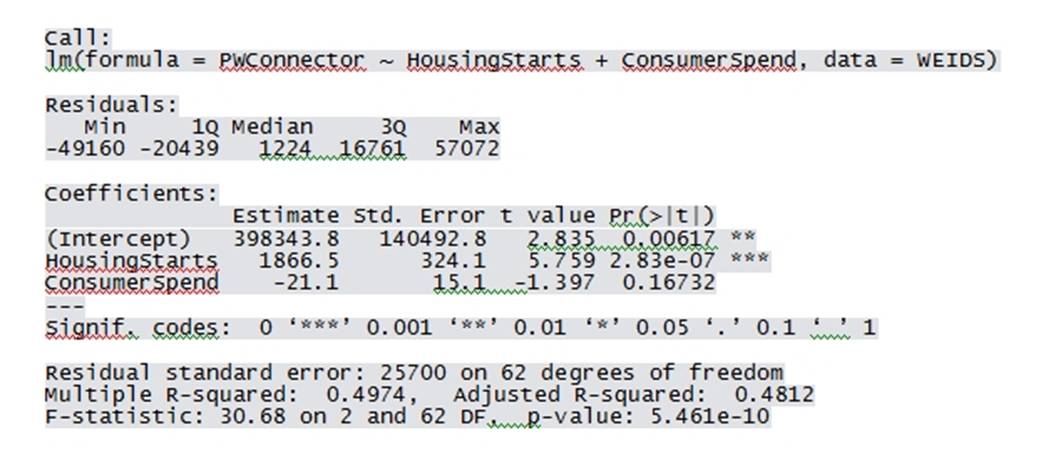I'm running a statistical analysis for work in which I'm trying to determine which (if any) key economic indicators influence our sales. Here is the summary data that I'm getting when I run a multiple regression:

It appears to me that the overall regression has strong significance, as does the HousingStarts variable. The R-squared and Adjusted R-squared values also appear to indicate strong correlations. My question is on how I should interpret the ConsumerSpend variable, which has a somewhat high p-value. Does that indicate a weak correlation to the overall regression and therefore I should disregard it, or does the overall p-value trump the individual variable p-value? I should note that I ran separate linear regressions for the two variables, and both of the p-values were well below .001 (although the R-squared and adjusted R-squared for the ConsumerSpend regression was .2285 and .2163, respectively). Sorry if this is a basic question, but I took one stats class in business school, and I'm trying to apply what I learned!
